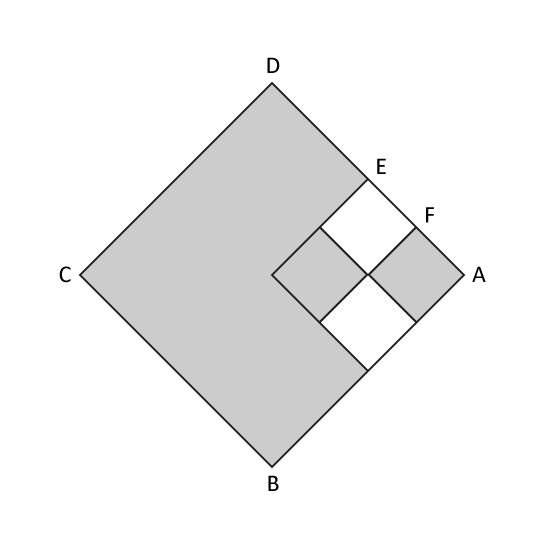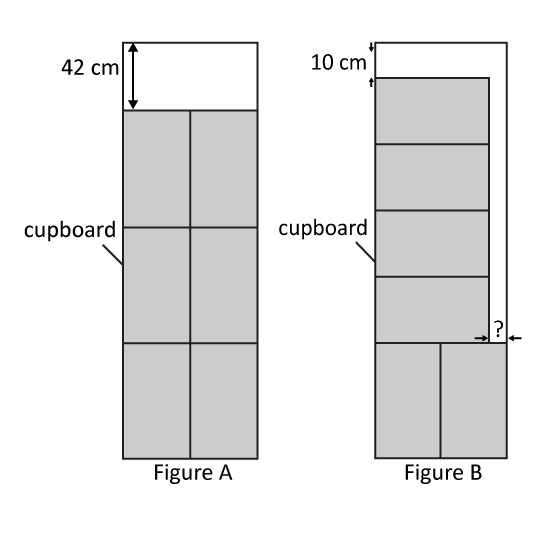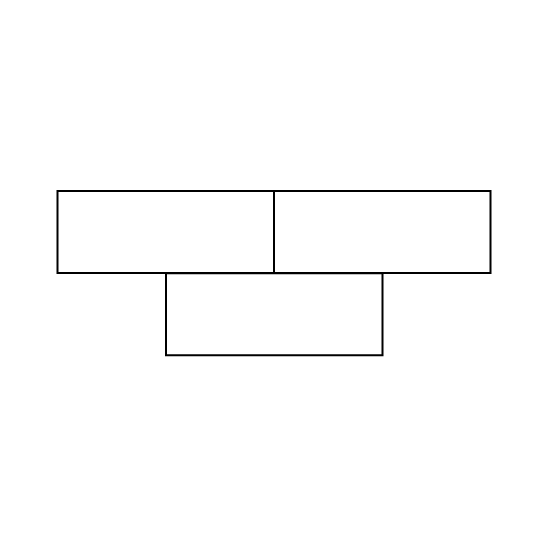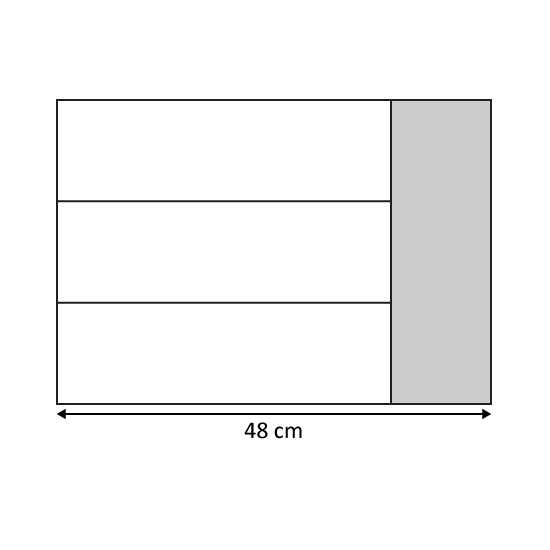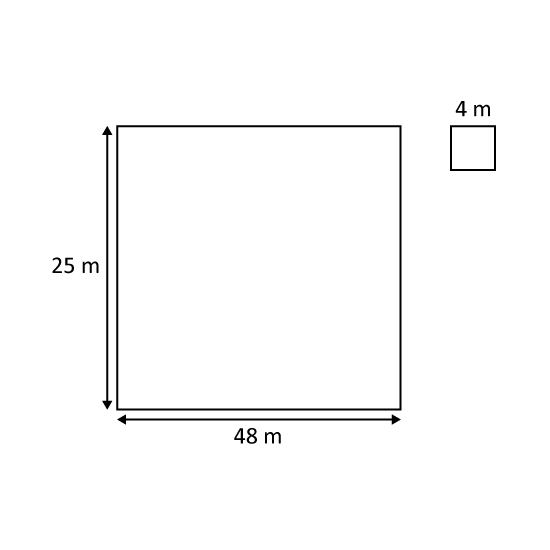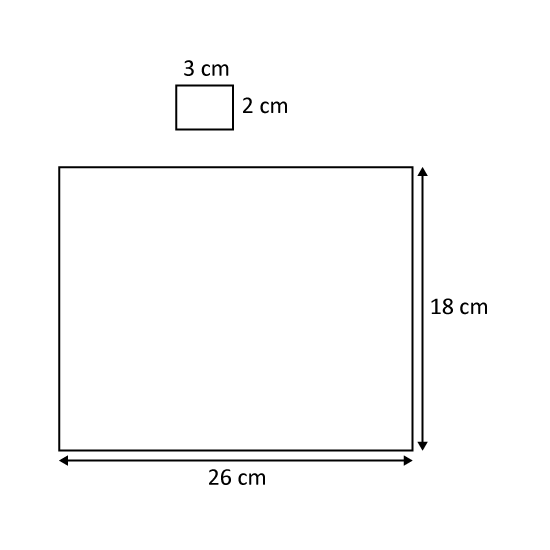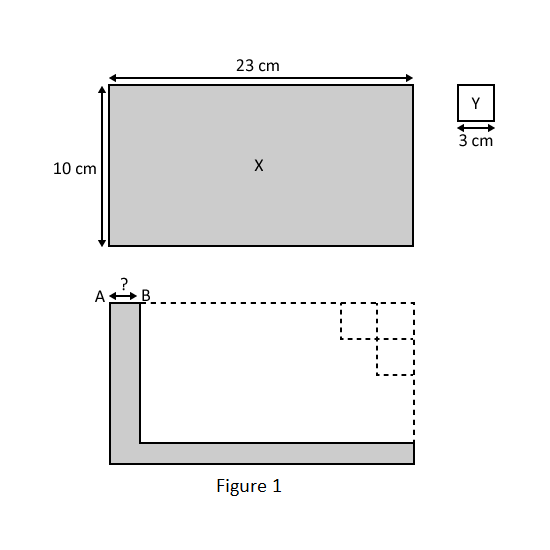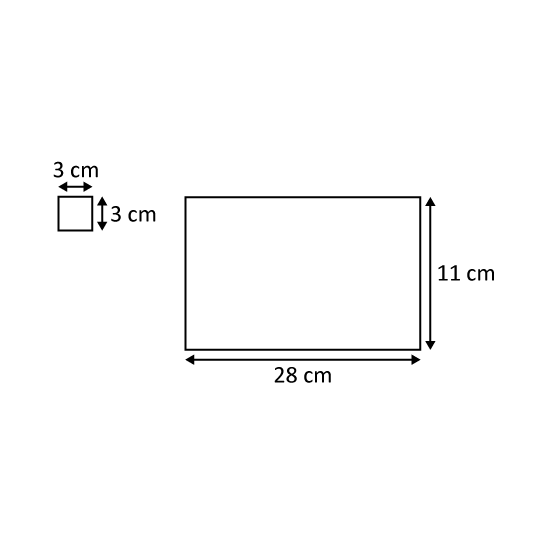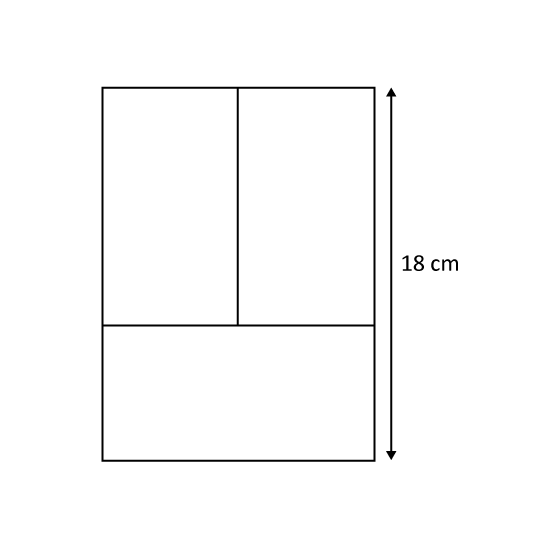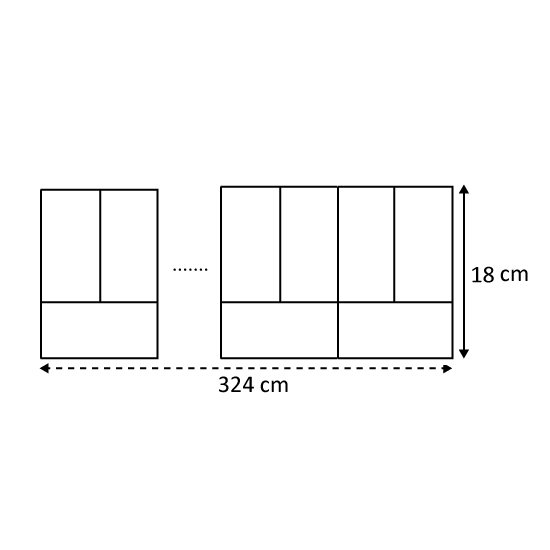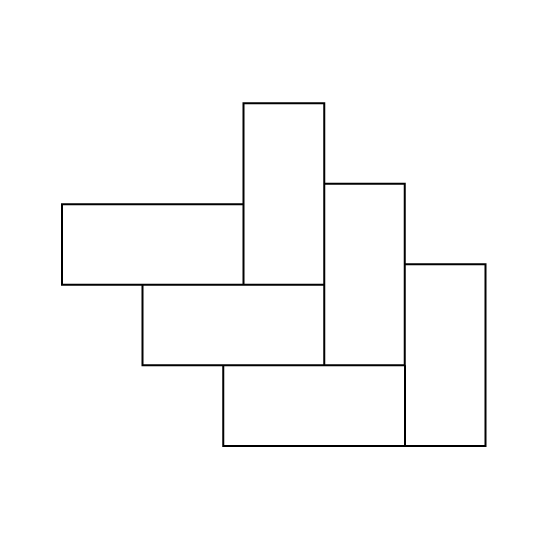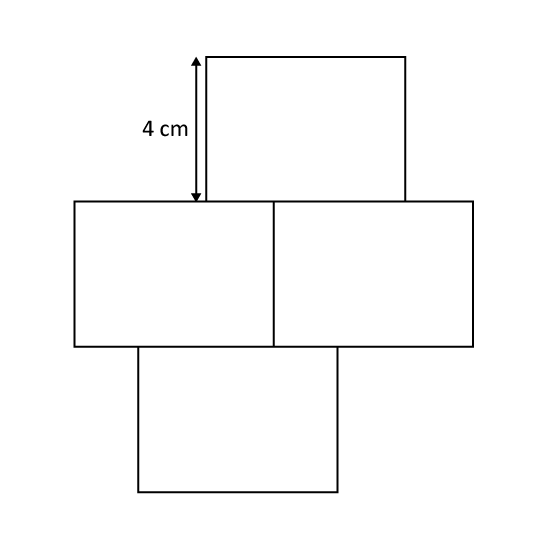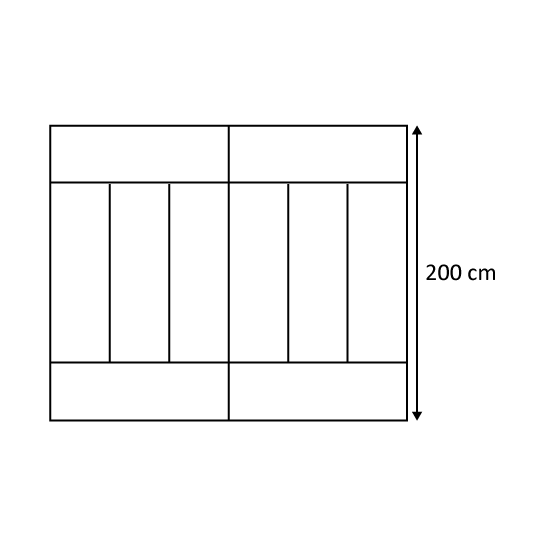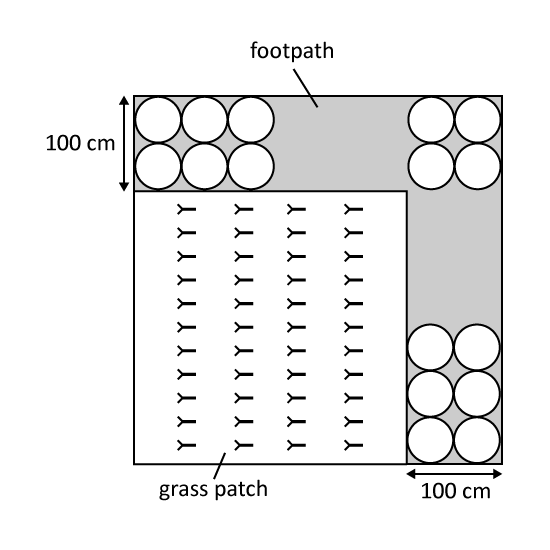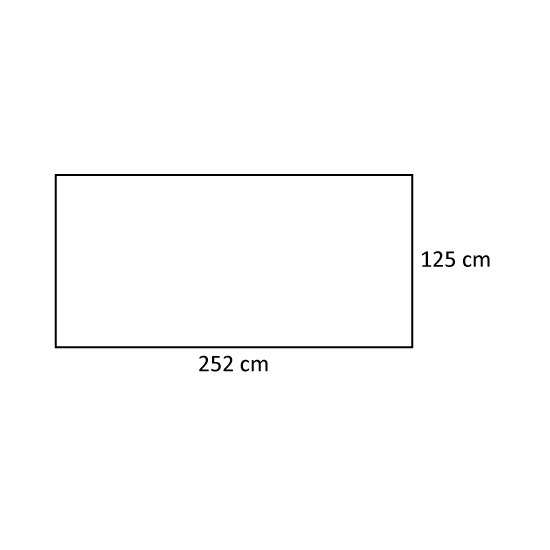Level 3 PSLE The pattern on the tile ABCD shows squares of different sizes. AF = FE and AE = ED.
- What fraction of the tile ABCD is shaded?
- Figure 2 is made up of four such tiles. The area of the unshaded part of Figure 2 is 80 cm2.
What is the total area of the shaded parts in Figure 2?
Level 3 PSLE The pattern on the tile ABCD shows squares of different sizes. AF = FE and AE = ED.
- What fraction of the tile ABCD is shaded?
- Figure 2 is made up of four such tiles. The area of the unshaded part of Figure 2 is 80 cm2.
What is the total area of the shaded parts in Figure 2?
Image in this question is not available.
Level 3 PSLE
Six identical rectangular boxes can be stacked into a cupboard 0.9 m wide. Two arrangements are shown. The first arrangement in Figure A leaves a 42 cm gap at the top. The second one in Figure B leaves a 10 cm gap at the top and another gap at the side.
- In the arrangement shown in Figure B, what is the width of the gap at the side in m?
- What is the height of the cupboard in metres?
Level 3 PSLE
Six identical rectangular boxes can be stacked into a cupboard 0.9 m wide. Two arrangements are shown. The first arrangement in Figure A leaves a 42 cm gap at the top. The second one in Figure B leaves a 10 cm gap at the top and another gap at the side.
- In the arrangement shown in Figure B, what is the width of the gap at the side in m?
- What is the height of the cupboard in metres?
Image in this question is not available.
Level 3
A rectangular floor, 18 m by 9.5 m, is laid with rubber tiles at a cost of $29 per square metre.
- Find the cost of tiling the floor.
- Round off the answer in (a) to the nearest thousand dollars.
3 m
Image in this question is not available.
Level 2
The figure is made up of similar rectangles. Each rectangle measures 5 cm by 2 cm. Find the perimeter of the figure.
Level 2
The figure is made up of similar rectangles. Each rectangle measures 5 cm by 2 cm. Find the perimeter of the figure.
Image in this question is not available.
Level 2
The figure is made up of identical rectangles. Find the area of the shaded rectangle.
Level 2
The figure is made up of identical rectangles. Find the area of the shaded rectangle.
Image in this question is not available.
Level 3
How many pieces of square grass carpets, each of side 4 m long, are needed to cover a rectangular field of length 48 m and breadth 25 m?
Level 3
How many pieces of square grass carpets, each of side 4 m long, are needed to cover a rectangular field of length 48 m and breadth 25 m?
Image in this question is not available.
Level 3
Brian wanted to cut small identical 3 cm by 2 cm rectangles from a rectangular cardboard measuring 26 cm by 18 cm. What is the maximum number of complete small rectangles Brian could cut? (Note: Brian could rotate the small rectangle.)
Level 3
Brian wanted to cut small identical 3 cm by 2 cm rectangles from a rectangular cardboard measuring 26 cm by 18 cm. What is the maximum number of complete small rectangles Brian could cut? (Note: Brian could rotate the small rectangle.)
Image in this question is not available.
Level 3
What is the maximum number of rectangles each measuring 3 cm by 2 cm that can be cut from a cardboard measuring 48 cm by 22 cm?
3 m
Image in this question is not available.
Level 3
The diagrams show a rectangular cardboard X and a square Y.
Abel cut as many squares Y as he could from rectangular cardboard X.
The remaining part of the rectangular cardboard X is shown in Figure 1.
- What is the length of AB as shown in Figure 1?
- What is the greatest number of squares Y that Abe could cut from a rectangular cardboard X?
Level 3
The diagrams show a rectangular cardboard X and a square Y.
Abel cut as many squares Y as he could from rectangular cardboard X.
The remaining part of the rectangular cardboard X is shown in Figure 1.
- What is the length of AB as shown in Figure 1?
- What is the greatest number of squares Y that Abe could cut from a rectangular cardboard X?
Image in this question is not available.
Level 3
What is the maximum number of squares of side 4 cm that can be cut from a rectangle measuring 81 cm by 74 cm?
3 m
Image in this question is not available.
Level 3
Adrian wants to cut some 3-cm squares from a piece of rectangular paper shown. What is the greatest number of squares he can cut out?
Level 3
Adrian wants to cut some 3-cm squares from a piece of rectangular paper shown. What is the greatest number of squares he can cut out?
Image in this question is not available.
Level 3
A rectangular floor tile has a pattern formed by 3 identical small rectangles as shown. The length of the tile is 18 cm. What is the floor space we can cover with 50 such tiles?
Level 3
A rectangular floor tile has a pattern formed by 3 identical small rectangles as shown. The length of the tile is 18 cm. What is the floor space we can cover with 50 such tiles?
Image in this question is not available.
Level 3
A rectangular floor tile has a pattern formed by 3 identical small rectangles as shown. The length of the tile is 18 cm. If we want to lay them side by side as shown to occupy a length of 324 cm, how many tiles do we need?
Level 3
A rectangular floor tile has a pattern formed by 3 identical small rectangles as shown. The length of the tile is 18 cm. If we want to lay them side by side as shown to occupy a length of 324 cm, how many tiles do we need?
Image in this question is not available.
Level 3
The figure is made up of three identical squares of side 8 cm.
- Find the area of the figure.
- Find the perimeter of the figure.
Level 3
The figure is made up of three identical squares of side 8 cm.
- Find the area of the figure.
- Find the perimeter of the figure.
Image in this question is not available.
Level 3
The figure is made up of 6 identical rectangles with no overlapping parts. Each rectangle has a perimeter of 12 cm. Find the perimeter of the figure.
Level 3
The figure is made up of 6 identical rectangles with no overlapping parts. Each rectangle has a perimeter of 12 cm. Find the perimeter of the figure.
Image in this question is not available.
Level 3
The figure shows 4 identical rectangles (not drawn to scale). The length of each rectangle is twice its breadth. Given that the breadth of each rectangle is 4 cm, find the perimeter of the figure.
Level 3
The figure shows 4 identical rectangles (not drawn to scale). The length of each rectangle is twice its breadth. Given that the breadth of each rectangle is 4 cm, find the perimeter of the figure.
Image in this question is not available.
Level 3
A feature wall is covered by 10 identical small rectangular boards as shown. The height of the wall is 200 cm. What is the area of the feature wall?
Level 3
A feature wall is covered by 10 identical small rectangular boards as shown. The height of the wall is 200 cm. What is the area of the feature wall?
Image in this question is not available.
Level 3 PSLE
The figure shows a rectangular grass patch and an L-shaped footpath. The width of the footpath is 100 cm. The footpath is tiled using 38 circular tiles of diameter 50 cm, following the pattern shown. Each tile is in contact with those next to it.
- What is the area of the footpath not covered by the tiles? Take π = 3.14.
- What is the perimeter of the grass patch?
Level 3 PSLE
The figure shows a rectangular grass patch and an L-shaped footpath. The width of the footpath is 100 cm. The footpath is tiled using 38 circular tiles of diameter 50 cm, following the pattern shown. Each tile is in contact with those next to it.
- What is the area of the footpath not covered by the tiles? Take π = 3.14.
- What is the perimeter of the grass patch?
Image in this question is not available.
Level 3 PSLE The figure shows a right-angled triangle.
- Find the area of the triangle.
- Bruce wants to cut such triangles from a rectangular piece of cardboard 50 cm by 80 cm. At most, how many of such triangles can he cut?
Level 3 PSLE The figure shows a right-angled triangle.
- Find the area of the triangle.
- Bruce wants to cut such triangles from a rectangular piece of cardboard 50 cm by 80 cm. At most, how many of such triangles can he cut?
Image in this question is not available.
Level 3
A room has dimensions 252 cm by 125 cm. Tiles with dimension 20 cm by 12 cm were arranged on the floor. What is the maximum number of complete tiles that can be placed on the floor?
Level 3
A room has dimensions 252 cm by 125 cm. Tiles with dimension 20 cm by 12 cm were arranged on the floor. What is the maximum number of complete tiles that can be placed on the floor?
Image in this question is not available.
